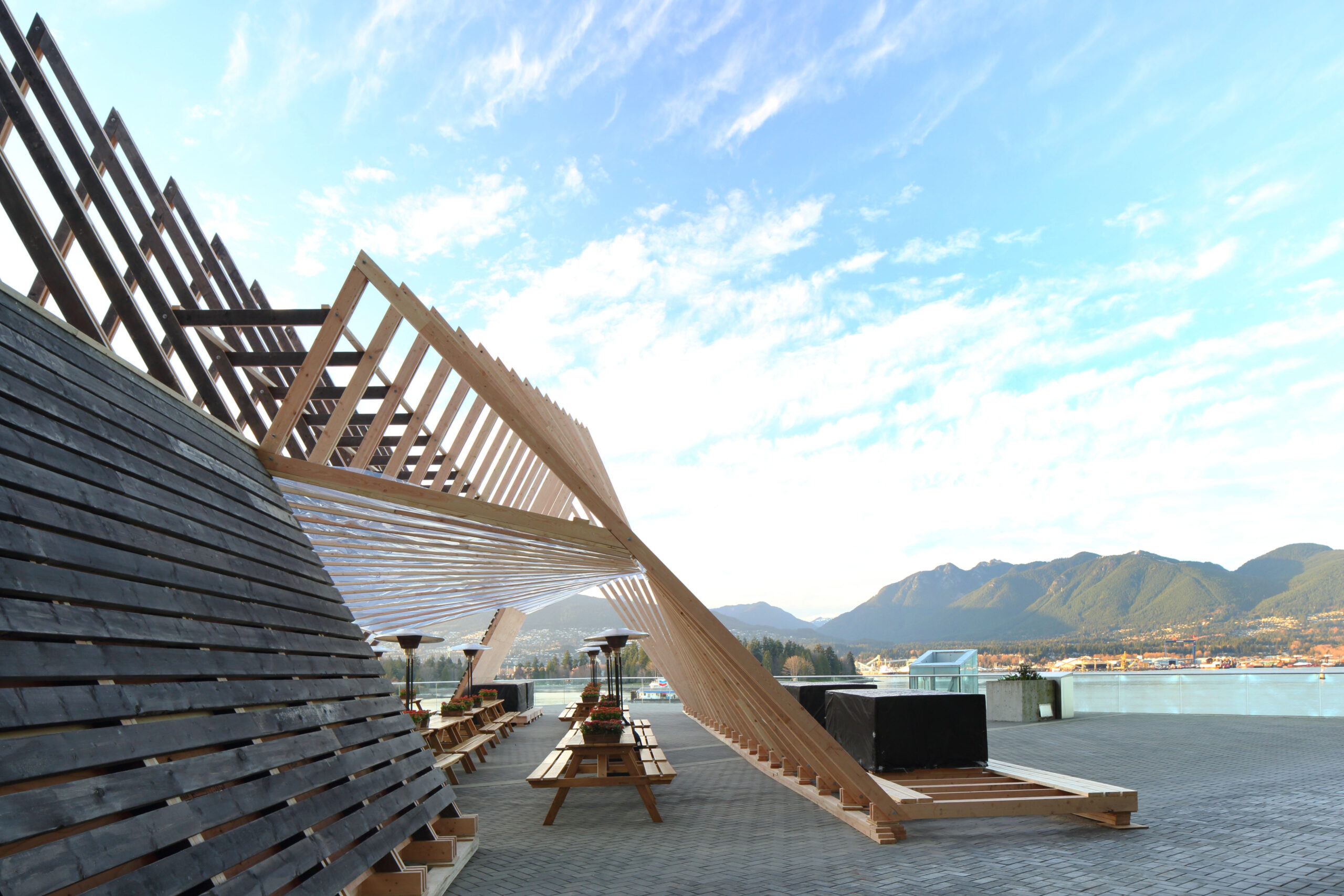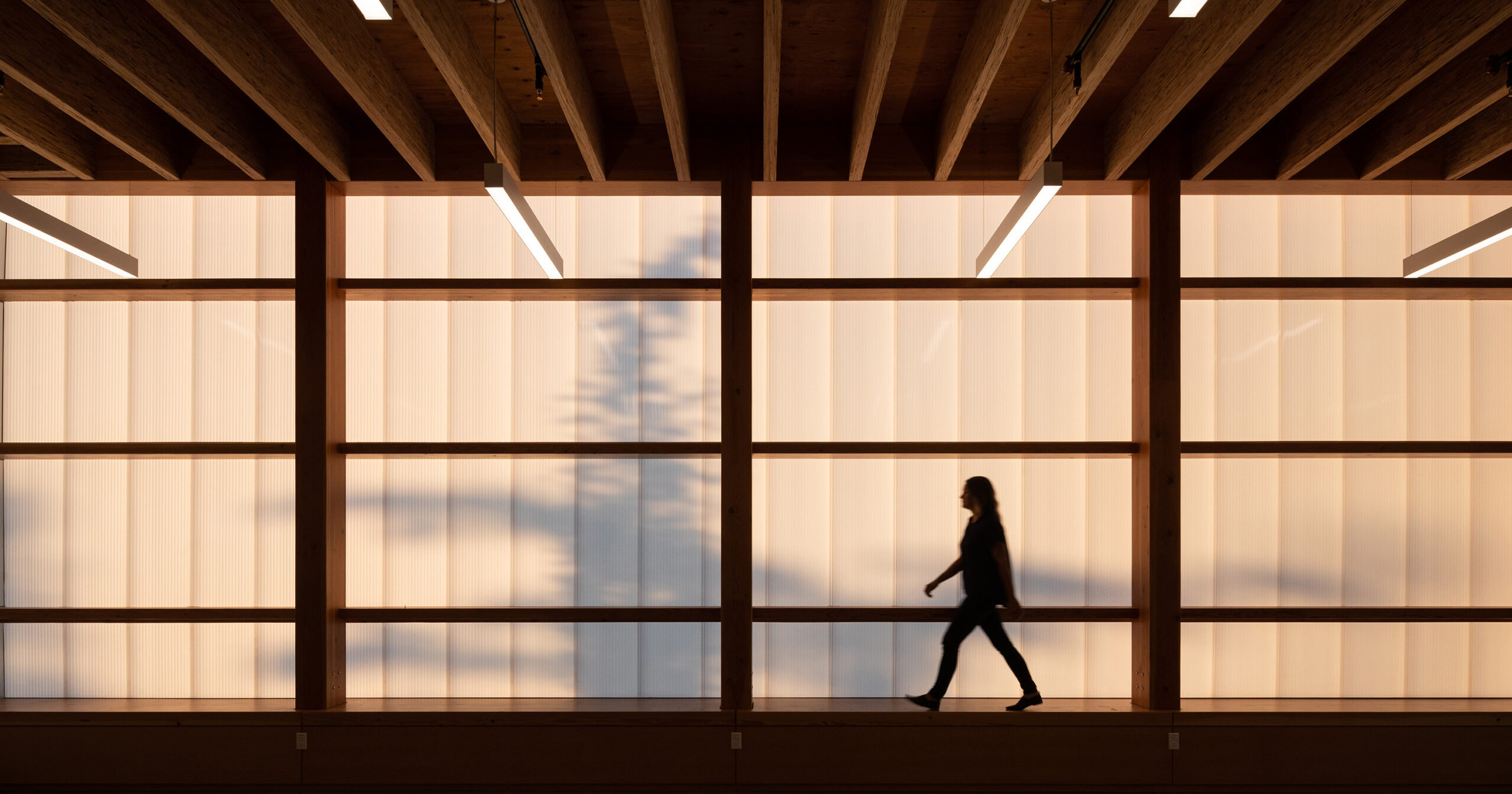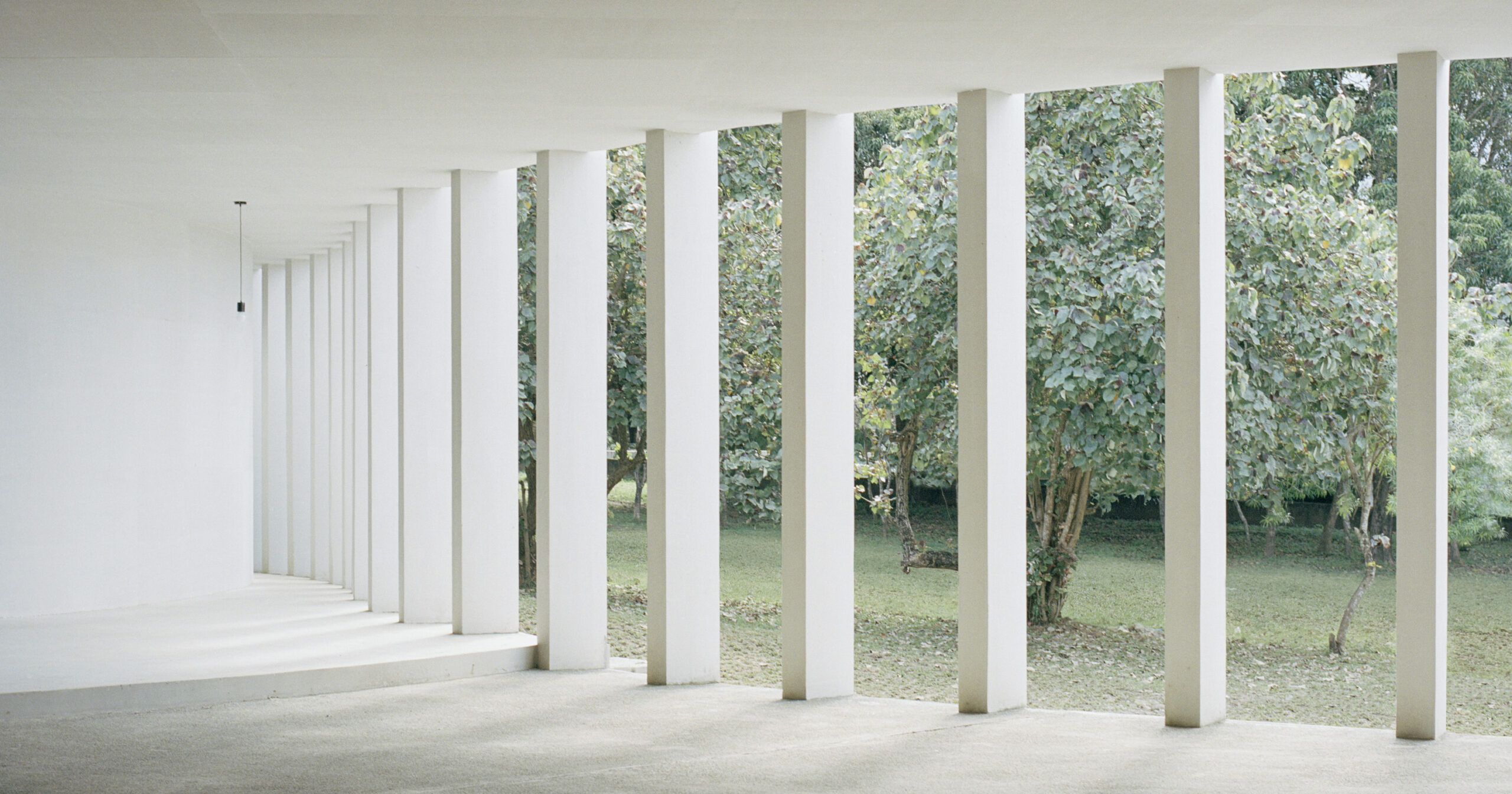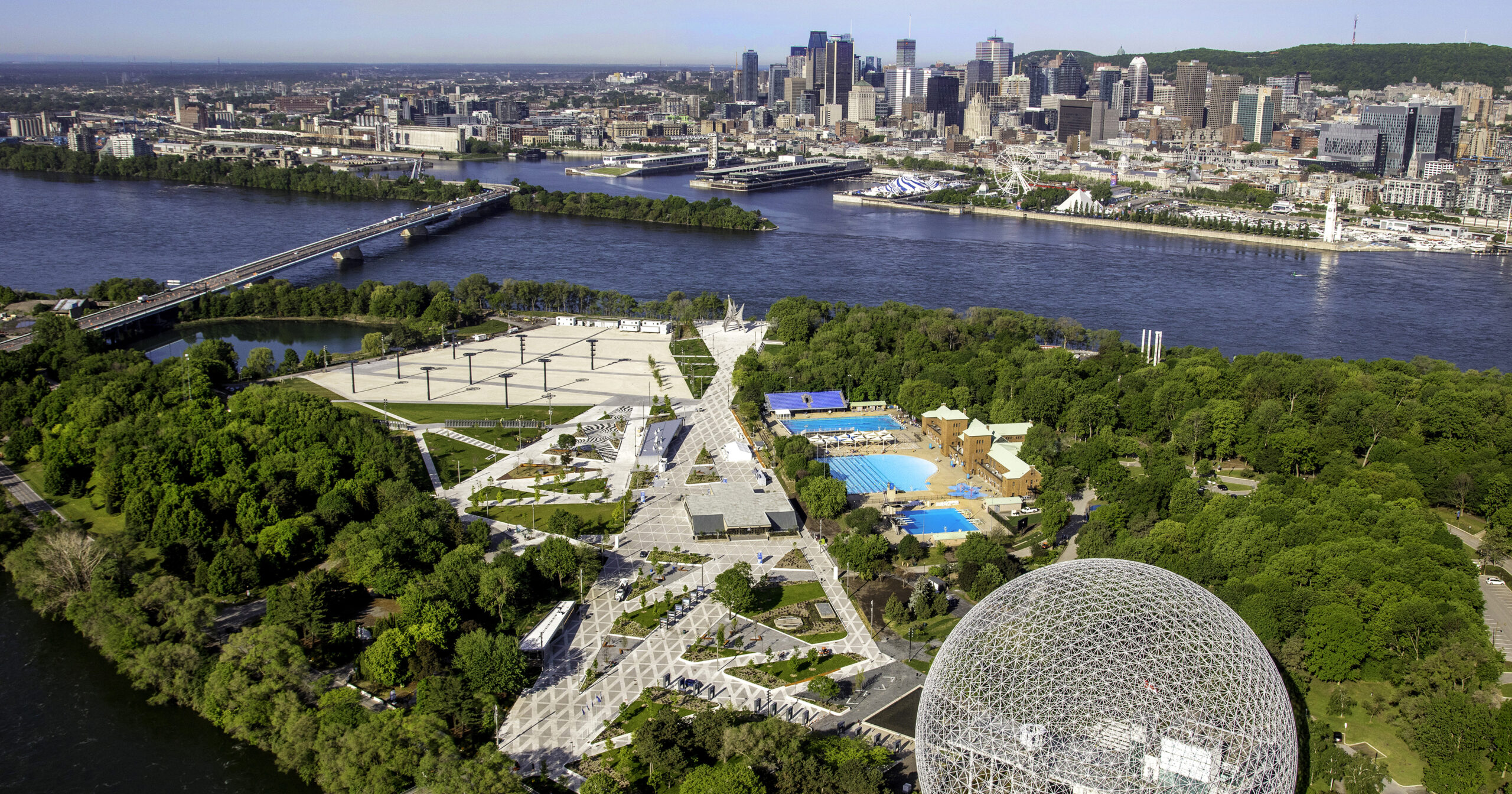MGA | Michael Green Architecture is not just a firm; it’s a movement dedicated to creating meaningful spaces that contribute to a better future for our planet. First and foremost, the firm is known for pushing the boundaries of mass timber construction and redefining the possibilities of wooden skyscrapers, seen in projects ranging from the renovations of North Vancouver City Hall and Interfor Metrotown to new builds such as the Wood Innovation and Design Centre, the Catalyst Building and the Oregon State University Forest Science Complex. From private homes to large-scale masterplans, their projects exemplify the power of design to shape a more sustainable, connected and environmentally conscious world.
For years now, the MGA’s namesake has been working not only as an architect and designer but also as an advocate in the profession. Imploring us to think critically about terms like “sustainability” and reframe greener building endeavors, Michael Green is completely doing away with the self-imposed boundaries (by us, as an industry, in the way that talk and think) that limit the reach of architects’ power to create positive societal change.
In acknowledgment of the firm’s outstanding outside-of-the-box thinking and advocacy, as well as its dedication to embodying these spoken values through built design, MGA | Michael Green Architecture was awarded Architizer’s Revolution in Design Award at the 11th Annual A+Awards gala in Paris. The tribute is reserved for individuals or groups who have not only made an impact in architecture but have reimagined the very practice of it, celebrating those who challenge the status quo and envision a future where architecture is a force for positive change on a global scale.
In his acceptance speech, Michael announced the incredible new initiative that his firm has been working on: the ARCHITECTURE REVOLUTION PRIZE, which will award 1 million dollars annually to the most innovative but practical climate solutions that can implemented and repeated to revolutionize the building materials and technologies. The prize will look for solutions that come from all corners and communities on this planet and the firm hopes to raise the award to 10 million annually. Stay tuned for more information, and in the meantime enjoy the inspiring interview with Michael Green, below.

Sixth + Willow by MGA | MICHAEL GREEN ARCHITECTURE, Vancouver, Canada (Michael Green, Project Principal throughout project initiated at Mcfarlane Green Biggar Architecture + Design) | Photo by Ed White Photographics
Tell us a little about your story — how did you get started? How did your firm grow?
I’ve never quite fit the mold of an architect in my own mind, preferring to see myself as a climber first, then a carpenter and finally an architect of sorts. From an embarrassing start as a terrible student at Cornell to trying to keep up for years at Cesar Pelli’s office, I never felt my stride until my mid-30s when I arrived home in Canada and the big wilderness of British Columbia. From that wilderness, I was reminded of earlier life experiences, building a log cabin with a chainsaw and a workhorse named Buck, and of days as a kid sitting in my grandfather’s shop. My work at that point in my life was mostly in airport design but then turned from steel structures to wood, and a shift to natural materials and a commitment to tread lighter on our planet.
In Vancouver, I have been deeply fortunate to find like-minded people with great talent and a life balance in nature that informed the work that I am so proud of. My community of architects here is so talented, and the work of other firms here inspires and pushes us to constantly improve. We started MGA as it is now in 2012 with a fresh vision and determination to have carbon as our singular story of WHY. In that process, a graduate student on an internship, Natalie Telewiak, eventually became my equal partner at MGA. I could not be more honored to work with Natalie, who truly makes our practice a wonderful place to work, alongside some remarkable designers who share our belief that we can indeed help change the world.

TED LIONS MARQUEE by DBR | Design Build Research (a registered non-profit organization facilitated by MGA), Vancouver, Canada
My work in tall wood building began around 15 years ago with a fortuitous series of events and people that turned into a book and our story of WHY wood. In conversations with inspiring leaders like my friend Andrew Waugh in the UK and Herman Kaufmann in Austria, the early days of the tall wood movement were hard work; skepticism was strong but our belief in change was thankfully stronger. My TED2013 talk helped ignite a global conversation and some industry evolutions that have helped, but are not nearly enough to address the enormity of the impact that the built environment has on climate, environment and wellbeing.
That first TED talk and the mass timber movement has proven a valuable lesson on how global change can happen and through it we learned a process for repeating it. We learned that the single most important way to change the world is to give all ideas away for free, share them, spread them, and own their imperfections. We were told over and over that our industry is slow to change and will resist it but this last decade has disproved that idea and shown that leaps in innovation are possible, and of course, critically important.
Today, MGA works on projects around the world, and on new ideas that contribute to a structural revolution with photosynthesis as its engine. We acknowledge how far we still have to go, but we are always doing our best, consistently improving and adapting. Our job is to simply keep trying.

Ronald McDonald House BC & Yukon by MGA | MICHAEL GREEN ARCHITECTURE, Vancouver, Canada
Looking back, which of your projects do you feel was the most significant to the firm’s development and why? [You can pick more than one!]
For both my partner Natalie and I, the most significant project we have had the privilege to work on was Ronald McDonald House British Columbia and Yukon. The house serves families at our Children’s hospital going through treatments for cancer and other severe illnesses. The project in many ways reflects who we are and what we believe in. It is deeply rooted in community and well-being and the belief that through design we can improve the lives of the families going through an impossibly trying time in their lives. The project holds all the sustainability values we believe in and was the first substantial CLT project in North America, but that has always taken a backseat to the purpose of the building and the desire to help people in need. It also held personal importance to us; for me, as a single dad with two young children at the time we designed it, and ultimately for one of the young designers who worked on it who ended up needing to stay in the house for two years while her own child was being treated (he is doing great now!).
The design culminated in a children’s book I wrote for the house about a young flower called Alpenglow. In every way we saw our collective voice as a firm through the realization of the project and continue to be deeply connected to its purpose since. For us, architecture is not about how buildings look, it is about the meaning they give. Each of our projects finds a meaning and purpose that tries in some small way to contribute to a larger local, regional, or global conversation. Meaning is what fuels our practice.

North Vancouver City Hall by MGA | MICHAEL GREEN ARCHITECTURE, North Vancouver, Canada
You have become renowned for your forward-thinking ideas on reducing the environmental impact of buildings. How can the profession as a whole do more to influence the wider construction industry in this area?
Climate is our existential issue as humans and virtually all other issues will be impacted by its change. We all know this, but what can we do?
I believe there are three important things to focus on right now as an industry:
The first is LEADERSHIP. Architects are all inherently leaders. We help bring our ideas and vision to reality by quietly leading our client, a group of consultants, and our community through a process to realization. But now, we need to speak up and we need to be heard. Our industry is the single biggest contributor to climate and therefore we are either the problem or the solution. Leadership isn’t to say, ‘our clients wont pay for this or that’, it isn’t to say ‘ what can my small practice do’, it isn’t ‘I don’t know where to begin.’ Leadership is to champion change, to believe in it, to inspire and aspire and to be brave, clear and communicative. We have trained our entire lives as architects for this exact moment. We do this with our voice, actions and determination. We do this by celebrating each other, by sharing our ideas, and by helping the public understand our impact and the direction we all must go. This is our job and I believe we can help lead huge global changes because we are architects and its our responsibility, our skillset, our process and our shared conviction to do so.
The second is INVESTMENT. If 42% of anthropogenic climate impact is directly connected to the making and operating of buildings (a number upwards of 60% or more in most cities of the world) then why are we not asking for and frankly demanding a level of research and development by global government in the scale of our impact? Why are we not knocking on the doors of the venture capital community and showing them that small changes in the materials we build with are, because of the volume of what we do worldwide, the single greatest potential economic change and therefore investment opportunity in human history? We represent trillions of dollars of global spending. If we stop thinking about our individual projects and instead think of our collective choices we are the biggest consumers on earth. That means we are the biggest investors. And as the biggest investors the choices we make through specifying can reshape the environmental impact of materials and the human impact including rights, fairness, safety, health, equity etc of making those materials.
The third is of course ACTION. We are creatives that solve problems and this is just another problem to solve with the gifts our practice and art have given. This problem; the climate crisis, is solved by small actions and large. Small actions mean shifting our material choices away from high carbon materials, returning to design principles that were used before energy was cheap and mechanical systems solved all ills. Every practice on the planet can make small incremental changes and must. Those change should not happen because codes force us. They should happen because our pride as a beautiful profession demand them. Small actions add up. And as with our need to lead we need to act globally and use our voice to inspire change. Action means now. Action invigorates and inspires. Action creates momentum.

Photo by Alex Bonnemaison
What does winning the Revolution in Design Award mean to you and the firm?
I think all of us in our industry have a funny relationship with these acknowledgements and awards. Imposter syndrome definitely comes to mind. Natalie and I and our whole team are incredibly honored by this award but we also feel sheepishly underserving. We have so far to go as a practice and there are so many firms doing brilliant work that we see as revolutionary all over the world. I am constantly in awe of the work of our profession, the dedication to community, planet, to culture and the uplifting aspiration of the work we all do. I am in awe of the practices in my home town and in every corner of the planet I have visited.
The title Revolution in Design is just a fantastic idea. I believe it is what we are all part of now; all architects. I really believe that Revolution in Design is now the base minimum for showing up in our industry. The world is asking us all to solve this climate crisis. We actually can. So I guess in a way I see this as the title of our time and not about us. I see it as the reality that we are all revolutionaries now, revolutions that might seem small in each of our day to day practices actually add up to massive change. How fun and great is that!

Catalyst Building by MGA | MICHAEL GREEN ARCHITECTURE, Spokane, Washington | Photo by Benjamin Benschneider
If you had one piece of advice to offer the next generation of architects, what would it be?
You have chosen this profession to make a difference and you will. There will be days in your early career where you may doubt that. This is hard work. But you will find your voice. Do not pressure yourself to find yourself as an architect by a certain age, you will find it, let it come when it comes. And when it does believe in your voice. Listen to your peers. Hold humility because there is no perfect in what we do and all things change and we always learn. Remain open throughout your lifetime to new ideas and never let go of optimism because this beautiful profession that we share is built on each other’s shoulders and on the constant belief that we can make a positive difference for others.
Top image: Oregon State University Forest Science Complex by MGA | MICHAEL GREEN ARCHITECTURE, Corvallis, OR, United States Photo by Ema Peter Photography









